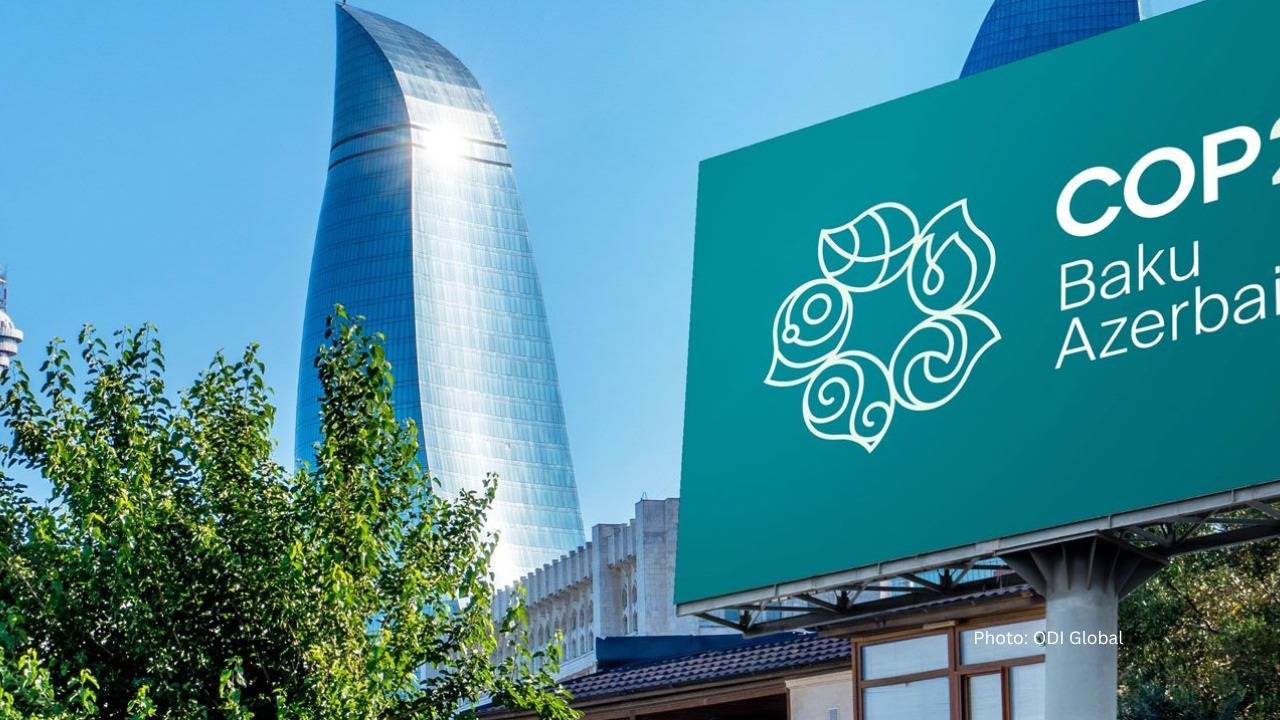COP-29: A Commitment Towards New Collective Quantified Goal Decision?
Really Chakma | 20 November 2024
The twenty-ninth session of the Conference of the Parties (COP29) to the United Nations Framework Convention on Climate Change (UNFCCC), held from November 11 to 22, 2024, in Baku, Azerbaijan, represented a pivotal moment in global climate diplomacy. Since its inception, COP has served as the central platform for nations to negotiate and implement strategies to combat climate change. Emerging from the landmark agreements of the Kyoto Protocol and the Paris Agreement, COP29 carried the weight of expectations to address the pressing challenges of climate financing, carbon markets, adaptation strategies, and global emissions reductions. Positioned within a historical trajectory of evolving climate goals, COP29 sought to build upon commitments established in prior conferences, such as the tripling of renewable energy targets set at COP28 in Dubai and the creation of the Loss and Damage Fund at COP27 in Egypt.
The objectives of COP29 were deeply rooted in the urgency of the climate crisis and the inadequacy of current measures to meet the Paris Agreement’s goal of limiting global warming to 1.5°C. Dubbed the “Finance COP,” the conference’s primary focus was to finalize a New Collective Quantified Goal (NCQG) on climate finance, intended to replace the $100 billion annual target set in 2009. This target, criticized for its failure to adequately reflect current needs and its inconsistent delivery by wealthier nations, was set to expire in 2025. COP29 aimed to establish a financial framework aligned with the escalating costs of transitioning to sustainable energy systems, adapting to climate impacts, and addressing loss and damage in the Global South.
The discussions at COP29 were characterized by a dynamic interplay of ambition, contention, and compromise. The participating nations agreed to a new financial target of mobilizing $300 billion annually by 2035, marking a substantial increase from the previous commitment. While this figure fell short of the trillions demanded by many developing nations, it was hailed as a progressive step toward equitable climate financing. The framework emphasized leveraging private capital and restructuring international financial institutions to better address climate risks. The contentious debate over whether fast-growing economies like China and Gulf states should contribute to the NCQG. But as usual they claimed to be classed as “developing” in the UN climate system.
Carbon market mechanisms, particularly under Article 6 of the Paris Agreement, remained a contentious topic at COP29. The conference achieved a breakthrough by finalizing the rules for carbon credit trading, establishing a standardized mechanism under the Paris Agreement Crediting Mechanism (PACM). The resolution sought to ensure transparency and environmental integrity in the use of offsets, addressing concerns that carbon credits might undermine genuine emissions reductions. Nonetheless, disagreements lingered regarding the inclusion of carbon dioxide removal (CDR) technologies, which many viewed as speculative and prone to diverting resources from direct mitigation efforts.
Despite these achievements, COP29 faced criticism for its perceived shortcomings and the controversial choice of Azerbaijan as the host nation. Azerbaijani president described fossil fuels as a "gift from God" at the World Leaders Climate Action Summit and its limited progress on climate policy drew scrutiny. He also criticised “western fake news” about his country’s emissions and chose not to announce its new UN climate plan, as widely anticipated.The exclusion of gender equity issues from the presidency’s priority list also elicited criticism, particularly in light of ongoing negotiations to revise the UNFCCC’s Gender Action Plan. Prominent world leaders wrote in an “open letter” criticizing the summit as “no longer fit for purpose” and emphasized the need for stronger leadership aligned with climate action goals let alone holding the presidency. Comparisons were drawn to the COP16 biodiversity summit which was concluded without a finance deal due to the absence of a large number of developing-country delegates who were forced to catch flights home, leaving parties without the “quorum” needed to reach consensus. On the other hand, the new presidency of Donald Trump raises the possibilities of rolling back climate action by the USA. Developing countries with G77 and China rejected the “substantive framework” requesting a new one. They pointed out providing money rather than investment or loans with tons of conditions in the name of investment.
Key takeaways from the conference sessions reflected both advancements and persistent challenges in global climate action. The tripling of climate finance commitments was a key achievement, though uncertainties around equitable delivery and allocation remain. Finalizing carbon market rules marked progress, but concerns about implementation linger. The focus on adaptation and resilience highlighted the needs of vulnerable communities, yet a gap between promised and mobilized resources continued to erode trust among developing nations. Looking ahead, the 2025 updates to Nationally Determined Contributions (NDCs) will test global ambition towards a Carbon-Free World. Looking ahead, COP29’s outcomes set the stage for critical discussions at COP30 in Belém, Brazil to resolve the long-standing lack of definition of what “climate finance” includes, which the LDCs said left “the door open for manipulation and inaction”. Yet the question remains, will ever climate justice become a reality with just climate finance holding the flag of unity in the world?
Really Chakma is an Intern at CGS
Views in this article are author’s own and do not necessarily reflect CGS policy.
